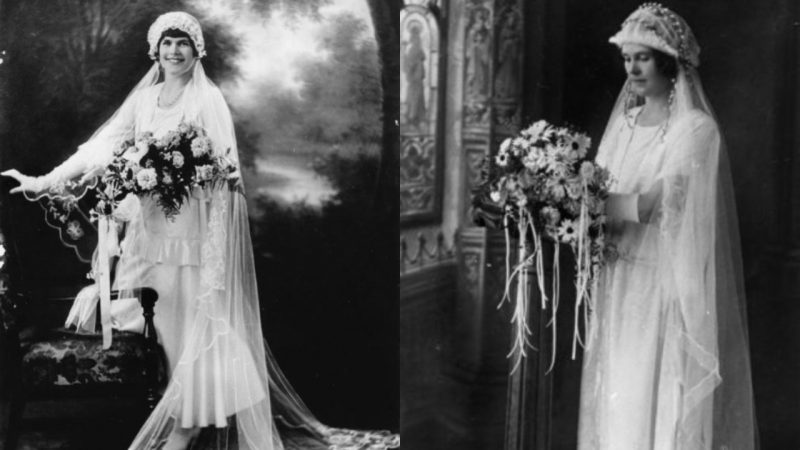
Bridal gowns have always been chosen with great care, embodying the wearer’s taste as well as social status. Wedding dresses usually define specific historical eras in their aesthetic, traditional, and even political aspects.
What unites them is brides, along with their families, have always wanted to look their best on the special day. Regardless of age, religion, and culture, the women want to complete their wedding with razzle-dazzle apparel, and that wish can never fade.
Today dresses are available and affordable for different styles and price points. Women can easily visit any bridal salon, choose from the myriad of dress samples, and order the one that will be made to fit perfectly.
In the past, however, this hasn’t always been the case.
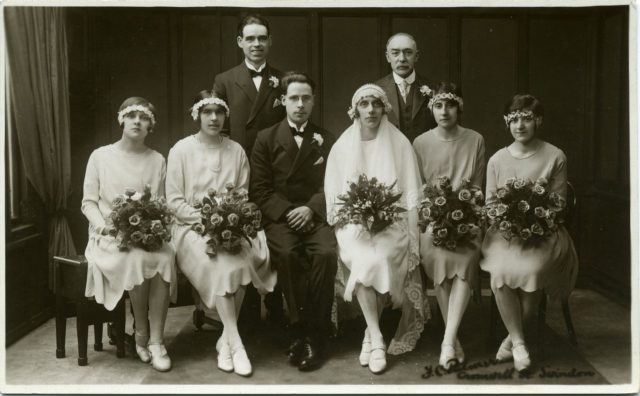
A 1920s or 1930s portrait photo of wedding group at Swindon, Wiltshire, England.

Bride wearing a bias cut, tea-length satin dress, and a flowing embroidered veil.
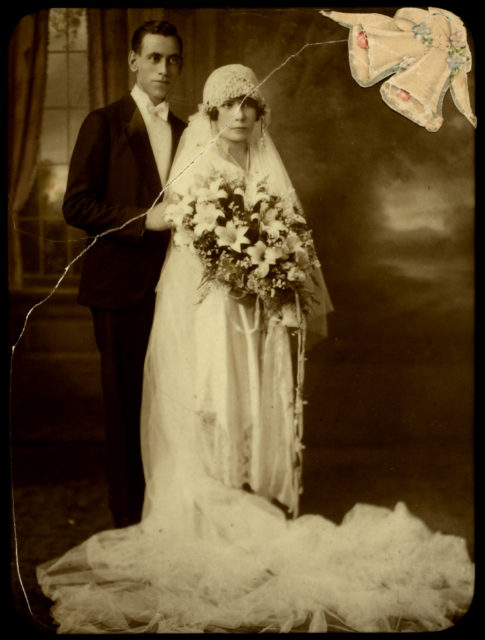
Groom and bride
Historically, the wedding dress befitted the social and economic status of the bride’s family. The wealthy families spared no expense on fabric nor the fee of the dressmaker, whereas families that had limited means tried to dress as formally as their budgets allowed. The expensive dresses were made of exclusive fabrics in rich colors, set in layers of velvet or silk.
The beginning of industrialization brought easily available and cheaper fabric to the Western world. People had access to more elaborate garments for festive occasions. Advancement of communication networks, as well as the media and faster postal delivery, helped even the most isolated working-class women try to capture the latest fashion trends.

May Doherty on her wedding day, 1924
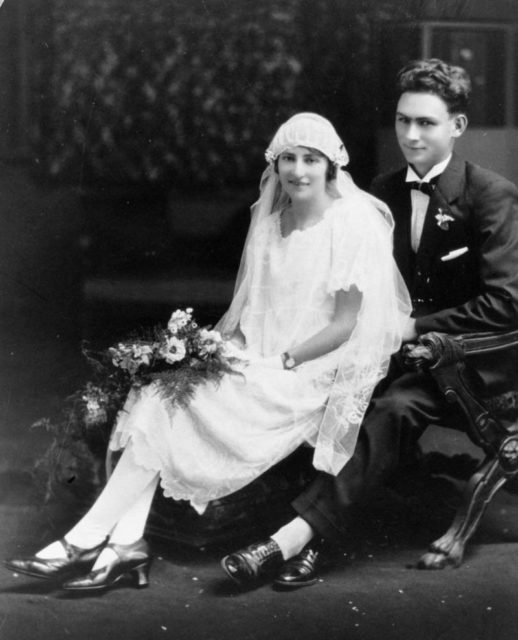
Minnie Heuschele
The roaring 1920s of lavish Gatsby glamor and bootleg gatherings was a period of beautifully assembled, boldly accessorized outfits. The brides of this era were ready to dance the Charleston, abandoning the restrictive fashions, looking forward to comfy, simple clothing lines. The loose, straight tailoring of female clothing was in vogue at the time, so, understandably, the wedding dresses reflected the same style.
The jazz era wedding dress agreed upon these changes in length and silhouette, embracing drop waists and elaborate embellishments that introduced the elegant, slim silhouette of the modern brides.
The dresses of the 1920s were typically short with a hem that was in different length in front than behind, usually accompanied by a wedding veil or hat in the cloche-style. Most of the dresses were white, though hues of eggshell, ecru, and ivory white were seen.
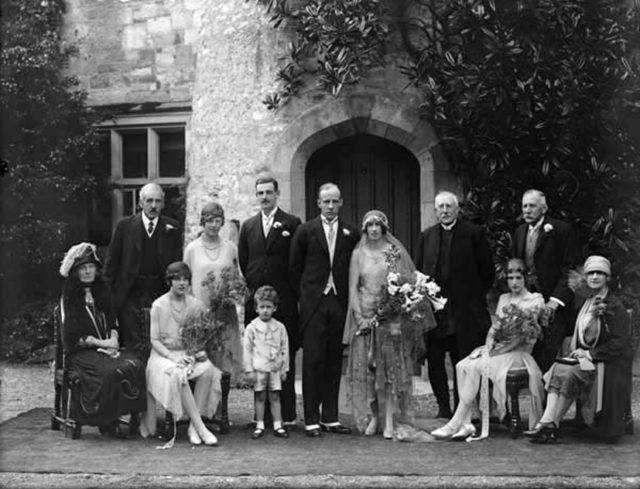
Penrose wedding at Lismore Castle, Waterford.
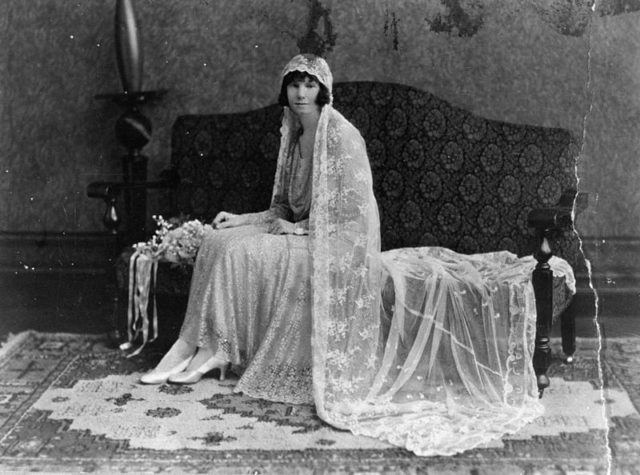
Poulsen Studios portrait of a bride, Brisbane, ca. 1929.
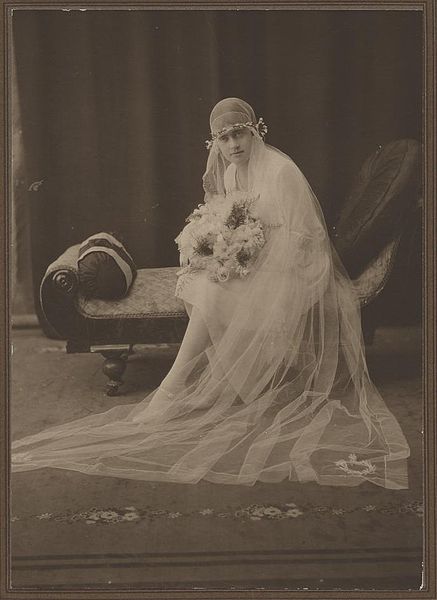
Ruby Smith on her wedding day, Dalby, 1928.
The luxurious fringing and the shimmering scalloped detail personified the fun, jazz, and beauty of the era. Some flappers who weren’t averse to showing some leg at their wedding wore short, playfully pleated skirts that moved with the dancer to the rhythm of the music. All of the dresses featured layers of sumptuous fabric, mostly silk or satin in pastel colors.
Some of these had lace trimmed details or intricate golden or silver embellishment, which was placed on the bodice or elegant draped or cap sleeves. The back was often covered with lace or silk-covered buttons. The aficionados of the Art Deco style proudly wore extravagant geometric patterns of shimmering pearl beads.
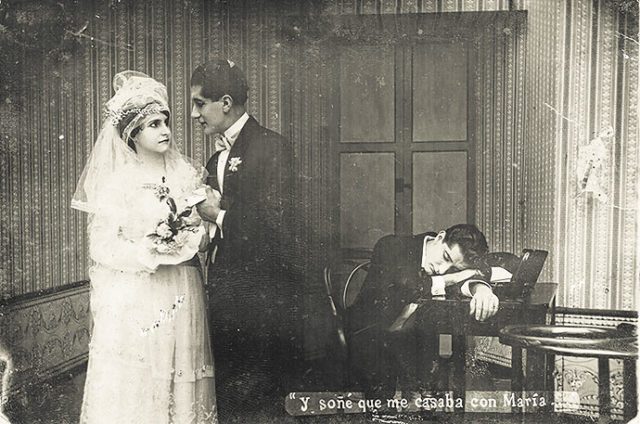
Still from María (1922) by Máximo Calvo Olmedo and Alfredo del Diestro.
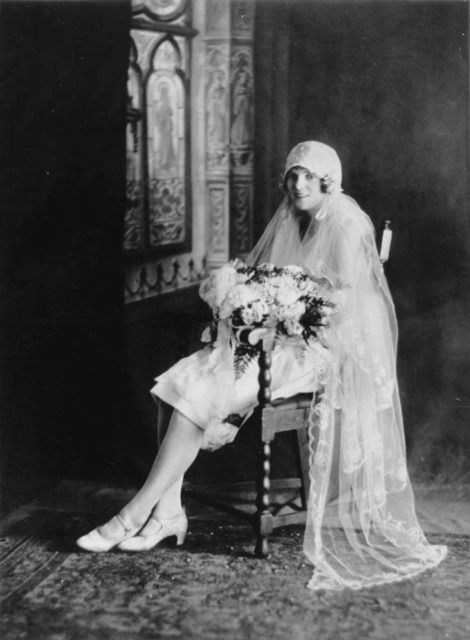
Studio portrait of a bride, she wears a cloche hat.
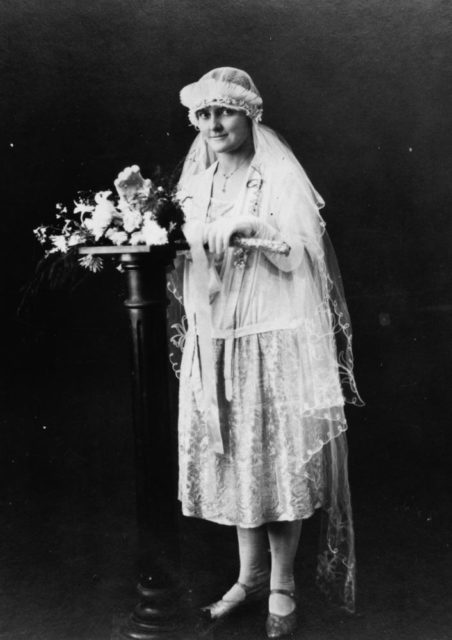
The bride is wearing a blouson top wedding dress with calf-length full lace skirt, her veil’s headpiece is surrounded by a tulle ruffle
To complement the authentic apparel, many of the brides chose to wear special headbands or beaded, glitzy hair accessories that made much of their graceful visage. Fancy T-strap shoes, Mary Janes, or pumps were added to the exquisite bridal appearance, matching these ornamental headpieces.
From the 1930s onward, the wedding dresses refrained from reflecting contemporary fashion styles and became much more traditional, often based on Victorian styles.
